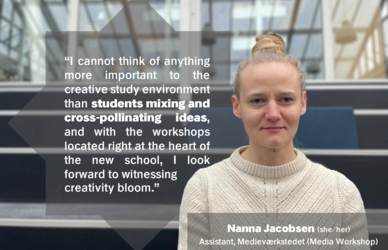Design to improve healthcare
A large majority of the unintended episodes reported to Aalborg Municipality are about medication errors. The complication is particularly evident in municipal care homes, domiciliary care and in residential accommodations. In care homes ’medicine not administered’ constitutes 63% of all reported episodes. In domiciliary care it is 52% and in residential accommodation 46%.
- We do not know why there are so many episodes of non-administered medicine when there are safety protocols in place that largely ought to prevent them, said Louise Weikop, head of Aalborg Municipality’s Quality and Innovation unit.
Collaboration
This is the motivation behind the special unit for Quality and Innovation under Aalborg Municipality’s Senior and Disability Department’s partnership agreement with Design School Kolding. The primary goal of the partnership is to work with designers towards a solution that can minimize medication errors in the Senior sector.
- We want to investigate how existing protocol does not prevent errors and are not adequate. Why don’t they make sense to the users? And what can we do to make sure that they will? Or do we need a completely different approach, Louise Weikop adds. In concrete terms, the partnership means that a group of care personnel in selected care homes will go through a design process under the supervision of Design School Kolding’s professional designers and developers.
- What is central for the designer is to identify and solve challenges and problems in a way that makes sense to the staff, residents and any next of kin part of the exchanges that constitute medicinal administration. What this means is that users can connect to the solutions – emotionally, functionally, socially and culturally, said Design School Kolding Rector Elsebeth Gerner Nielsen and adds:
- The designer’s solutions appear intuitively attractive because they are created in a stress field between on one side the designer’s creative potential and vision and on the other side, the users’ own experiences and ideas. This creates a balance between innovation – the unanticipated – and the users’ demand for recognition. This approach avoids ’waste’ in the form of products that never make it to market or public services that neither users nor staff find useful and therefore conveniently abandon.
Increased use of design
Starting with the case at hand, Aalborg Municipality’s unit for Quality and Innovation harbour ambitions to increase the use of design, not least because the future scenario is more welfare work with fewer resources.
- That is why we need to be creative and innovative. Aalborg Municipality wants to break with traditional thinking and dare to tread new paths to improve and develop the quality of life for citizens and staff, Louise Weikop concludes.





